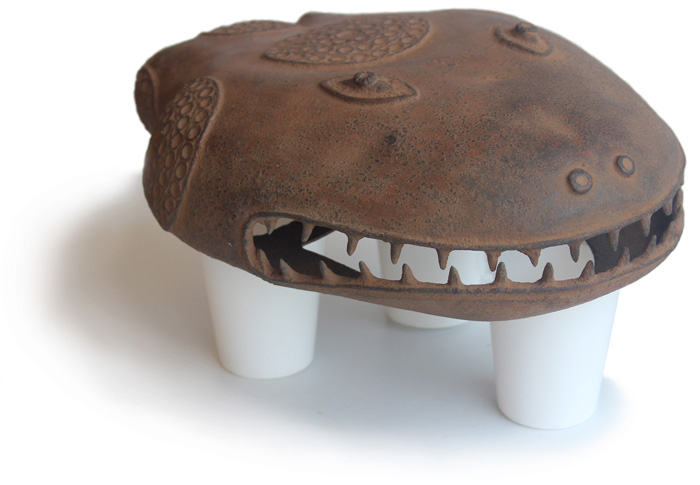Galerie Peter Herrmann |
- | Ancient Art from Africa |
||
 |
| Thermoluminescence - Expertise | Snake Head |
Benin-City, Nigeria |
|
| Edited in the net since march 2016 |
| Description |
This snake's head was pulled over the hand like a glove and used in parades. The snake movements were imitated with the arm. The heads described by Luschan on pages 340-342 all have fastening holes, through which he assumed they were doweled to a body. The head illustrated here does not have these holes, as it was made for dynamic use, while Luschan still saw static decoration as a task and referred to David van Lyendaal, who saw such snakes hanging from roofs as early as 1701. Unfortunately, none of Luschan's illustrations show the inside of a head. In the case of two of them, it could well be that they were also used at events. In the case of the one shown here, the small bar is visible in the photo, with which a hand can hold the inside of the head in a stable position. The skin is smooth. There are two raised nostrils. The irises of the elongated eyes are elaborated like small rosettes. Three whole circles are filled with again ring-shaped small circles. On the shaft, where the hand is inserted, three more such circles are bisected. A row of teeth is attached to the upper and lower jaws. A very finely grown patina suggests the 18th to 19th century. It is not a patina that speaks for hanging in the open but indicates storage. |
| Similar objects | Illustration |
Staatliche Museen zu Berlin, Ethnologisches Museum |
Felix von LUSCHAN: Die Altertümer von Benin, Band 1 -3, Berlin 1919, Chapter 18 pp 340-342. Tafel 77 und 78. |